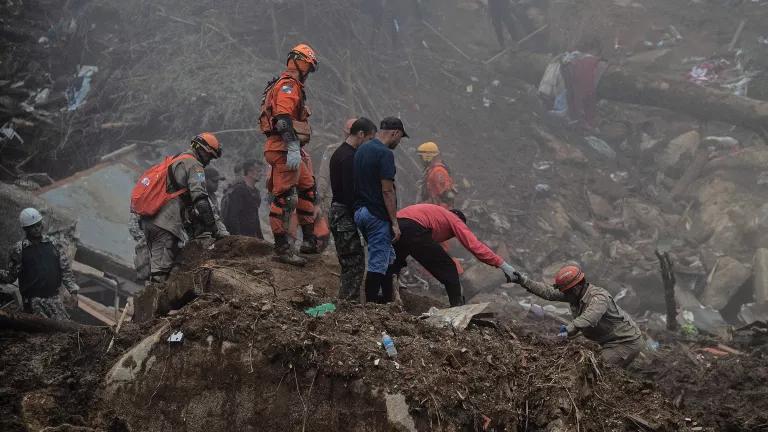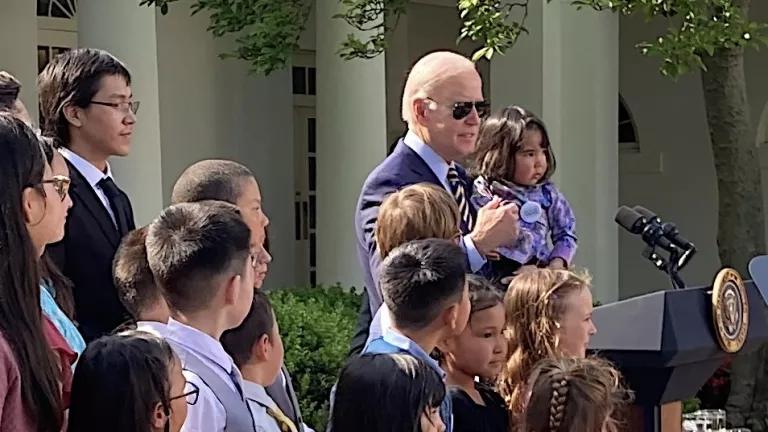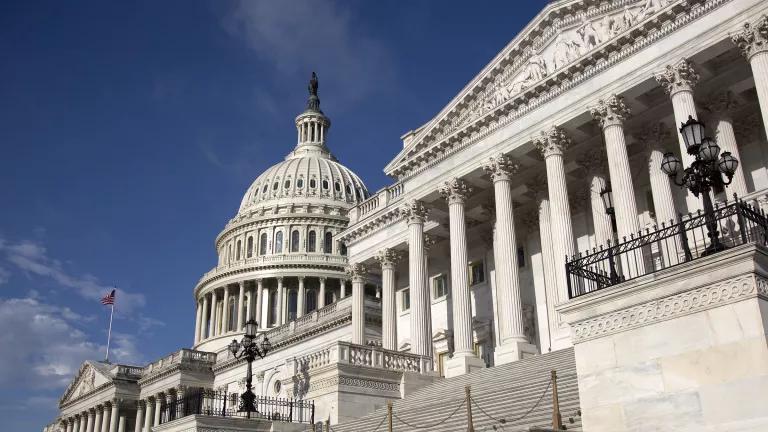Biden Turns Attention to Long-Ignored Tribal Injustice in the Columbia River Basin
A new memo from President Biden acknowledges that the ecological peril confronting the Columbia River Basin is inextricably linked to long-standing environmental injustices.
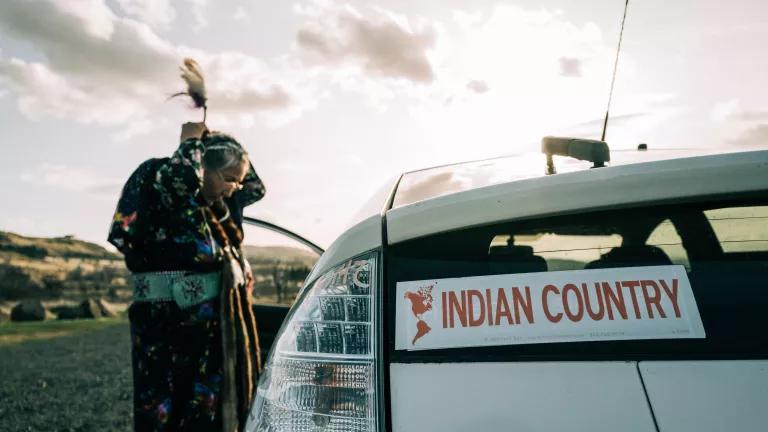
Image taken near Celilo Village, Oregon
Josué Rivas for NRDC
In a striking new White House memorandum, President Biden announced: “It is time for a sustained national effort to restore healthy and abundant native fish populations” in the Columbia River Basin.
The memo is remarkable because the president makes saving Columbia River Basin fish a whole-of-government imperative. And it is also noteworthy because what seems to drive this turn of events isn’t necessarily the weighty energy, legal, economic, or ecological concerns in the basin, although those are there too. What is the paramount problem that’s so long overdue and needs to be addressed? A crisis of long-standing inequity.
The Columbia River Basin was once the greatest salmon-producing river system on the planet with roughly 16 million fish returning each year, and those salmon were the wealth of the region and its original people. For more than a century, that wealth and way of life has been systematically stolen.
In 1855, the Columbia Basin tribes negotiated treaties with Washington State’s first governor, Isaac Stevens, and in exchange for ceding roughly 35 million acres of land (an area the size of New York State), the Nez Perce, the Confederated Tribes and Bands of the Yakama Nation, the Confederated Tribes of the Umatilla Indian Reservation, and the Confederated Tribes of Warm Springs reserved the right to fish in all of the usual and accustomed places.
That right to fish, as the U.S. Supreme Court later recognized, was “not much less necessary to [their] existence…than the atmosphere they breathed.”
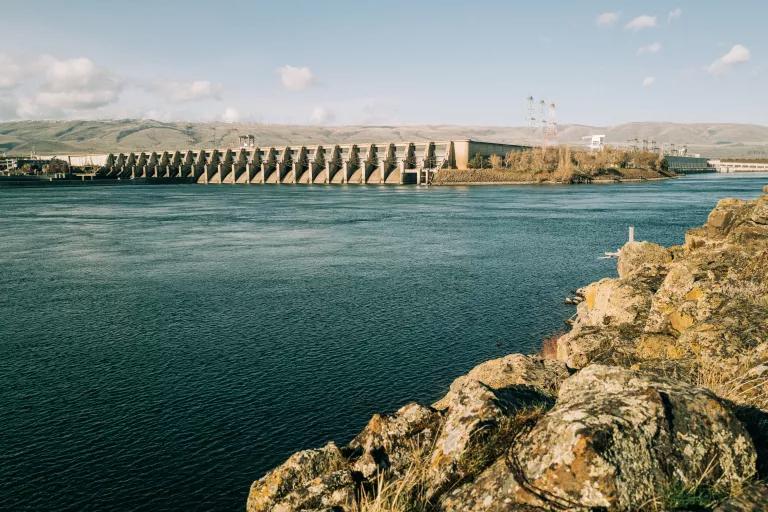
The Dalles Dam flooded Celilo Falls, a sacred native fishing place
Josué Rivas for NRDC
For the past 30 years, the region has been stuck in litigation gridlock, with five different federal court decisions all in agreement that the U.S. government is operating the Columbia River hydropower system in a way that jeopardizes the continued existence of salmon in violation of the Endangered Species Act. But that courtroom battle is only the latest chapter in a long and sordid history of the cutback to the Columbia Basin tribes’ right to fish.
In the early 1900s, white settlers began to build fish wheels to catch salmon on the banks of the Columbia River, taking over the best fishing spots and monopolizing the catch. At every turn, the states of Oregon and Washington—under the guise of using their police powers to protect the resource—aided in the thievery. The states passed laws and regulations that outlawed Indigenous People from fishing, required licenses and imposed fees, closed fishing during certain times of year, and even went so far as to reserve steelhead for sport and recreational fishermen only.
For several decades, Indigenous fishermen had to confront the hard choice of abandoning their usual and accustomed fishing places or risk arrest and jail. The basin’s tribes, many of whom had traditionally eaten more than a pound of salmon per person each day, suffered increased poverty and starvation on their reservations as a consequence.
It was in this context that the era of hydropower and dam building began. Bonneville Dam was completed in 1938, and it flooded Indigenous fishing villages and fishing grounds. The federal government promised to rebuild the villages—but it never has. Grand Coulee Dam was finished in 1942. Coulee provided the electrical power necessary to make aluminum essential for World War II planes. And the dam completely blocked all fish passage, robbing the Upper Columbia United Tribes of salmon entirely.
In total, dams and other developments now block more than 55 percent of the historical salmon spawning and rearing habitat of the Columbia River Basin, something that the federal government recently committed $200 million to hopefully better address.
A year after Coulee Dam was finished, the Hanford nuclear site was established on the banks of the Columbia River on lands sacred to the Yakama Nation. Once again, Indigenous people were forcibly removed from their usual and accustomed fishing places. Over the next 40 years, Hanford produced nearly two-thirds of the plutonium used in the country’s nuclear weapons, and the local Indigenous people were left to suffer from radioactive and chemical waste, contaminated lands, and polluted groundwater.
Between 1957 and 1975, the four lower Snake River dams were built on the Columbia River’s largest tributary, despite protest and widespread recognition that these four dams were the greatest threat yet to salmon survival in the basin.
Today, the Northwest likes to boast a large portfolio of cheap, clean hydropower. Forty percent of the electricity used in the Northwest is generated by federal dams in the Columbia River Basin and sold by the Bonneville Power Administration, and the dams play an important role in integrating other renewable energy resources, among other services.
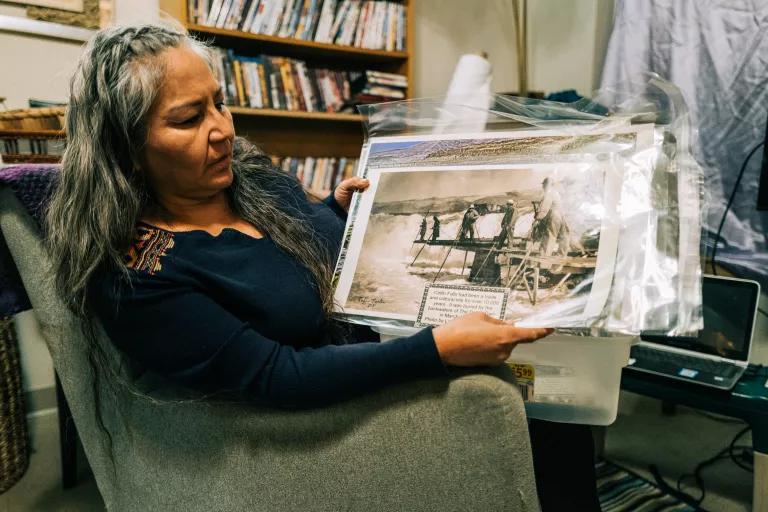
A Celilo Wy'am elder remembers her family fishing at Celilo Falls
Josué Rivas for NRDC
“It’s not cheap to us,” Nez Perce Chairman Shannon Wheeler said at a meeting last month.
A coalition of 57 Northwest tribes recently adopted a resolution calling on Congress and the president to “…Invest in Salmon and River Restoration in the Pacific Northwest, Charting a Stronger, Better Future for the Northwest, and Bringing Long-Ignored Tribal Justice to Our Peoples and Homelands.” That resolution powerfully explains “that the modern Northwest with its massive irrigation, hydropower, and storage systems was built on the backs of tribal peoples from the 1930s on, through the use and destruction of the lands, rivers, and fisheries we have lived with for thousands of years.” Recognizing that the fate of the tribes and Northwest salmon are intertwined, the resolution calls for implementing bold energy and salmon actions, including “restoring the lower Snake River by breaching the four lower Snake River dams.”
The decades-old controversy over the lower Snake River dams is one of the most complex natural resource, energy, transportation, and environmental justice challenges confronting the country. NRDC, together with the NW Energy Coalition and other partners, has shown that as we decarbonize the region, we can remove the four lower Snake River dams and replace the power they provide with a portfolio of conservation and renewable energy resources without compromising grid and transmission reliability or increasing greenhouse gas emissions.
President Biden’s memo does not take a position on the future of the lower Snake River dams, but we expect more news on that topic when the litigation stay ends later this month. What the president’s memo does do is require all federal agencies with a stake in this issue to review their programs within 120 days for alignment with the mandate to honor treaty responsibilities and enhance salmon abundance in the basin. Further progress will depend on follow-through support from the agencies as well as Congress.
With this memo, the White House has taken a historic first step in recognizing an important truth: The ecological peril confronting the Columbia River Basin is inextricably linked to the environmental injustices that have, for far too long, shaped and depleted the landscape.
This blog provides general information, not legal advice. If you need legal help, please consult a lawyer in your state.


